-
Textile, Apparel, and Footwear Certification
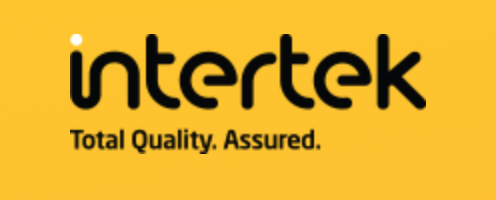
This is a website for the company Intertek that provides innovative and bespoke Assurance, Testing, Inspection, and Certification services to customers worldwide. SOURCE: Intertek
-
Textile Industry Wastewater Discharge Quality Standards
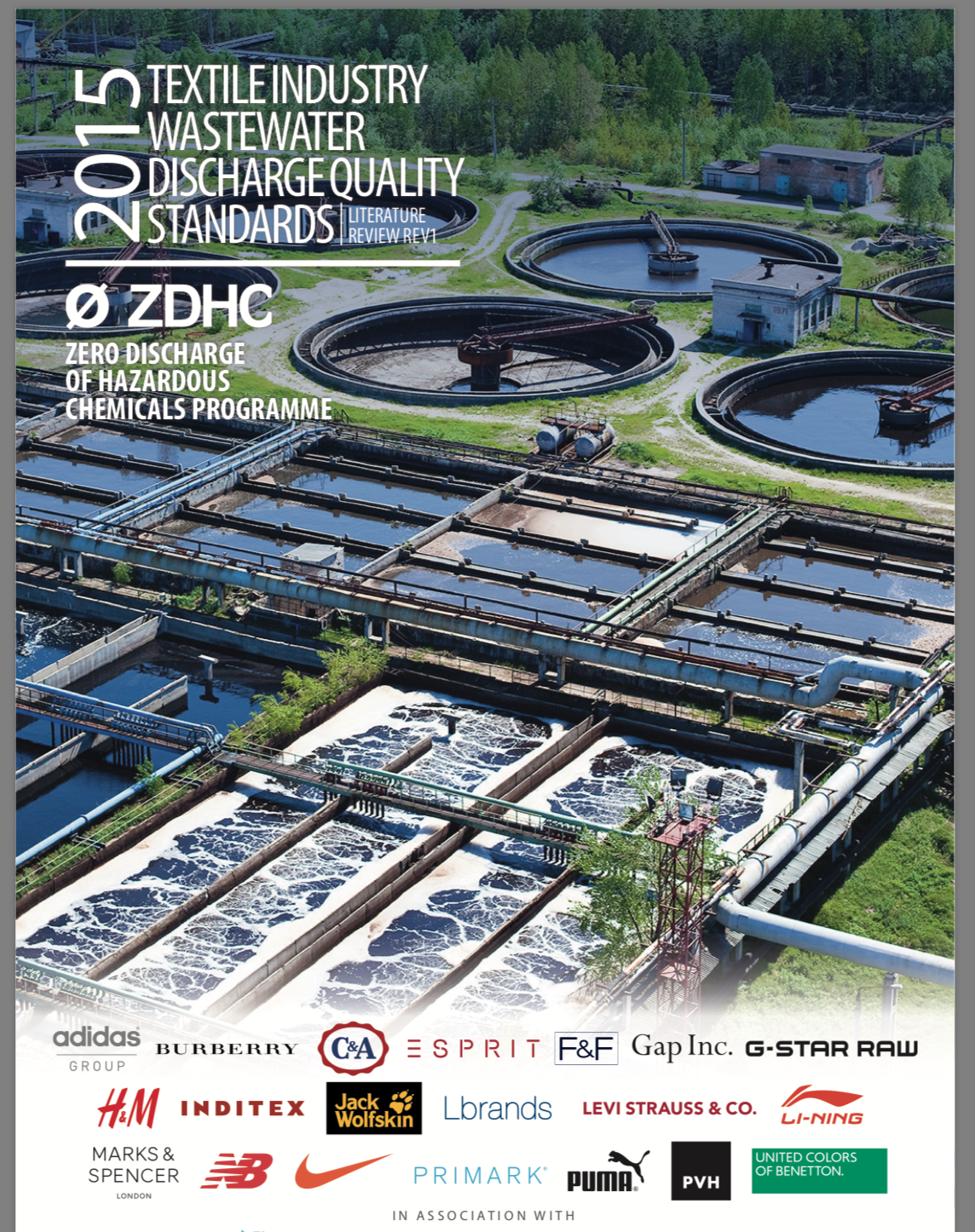
This is a document by the ZDHC (Zero Discharge of Hazardous Chemicals) written in 2015 that contains a literature review of the textile industry wastewater discharge quality standards. The ZDHC (Zero Discharge of Hazardous Chemicals) is a group of apparel and footwear brands and retailers working together to lead the industry towards zero discharge of […]
-
Sustainable Wet Processing—An Alternative Source for Detoxifying Supply Chain in Textiles
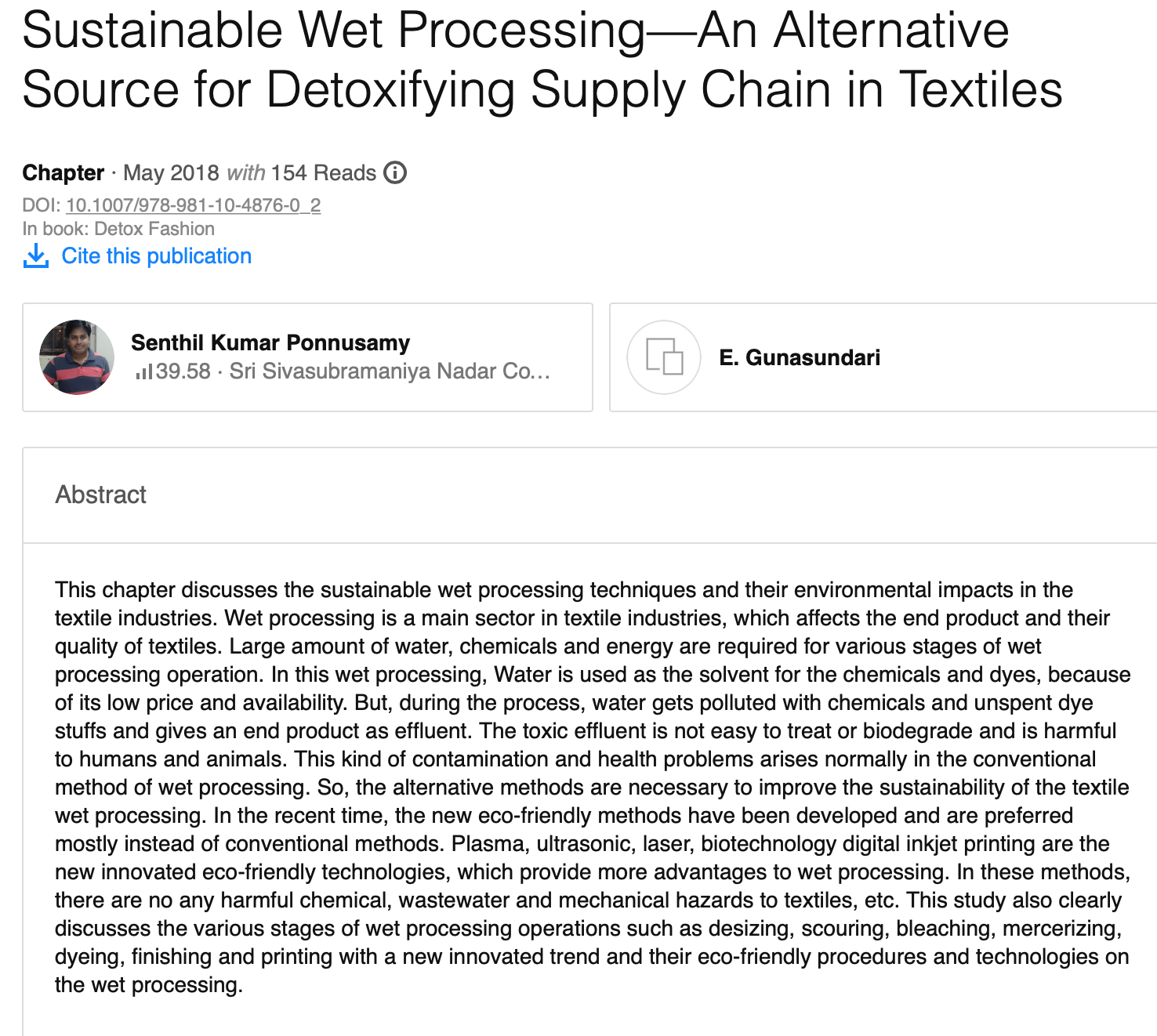
This is a chapter in the book “Detox Fashion” written in 2018. This chapter discusses sustainable wet processing techniques and their environmental impacts in the textile industries. SOURCE: ResearchGate
-
stEp Factsheet
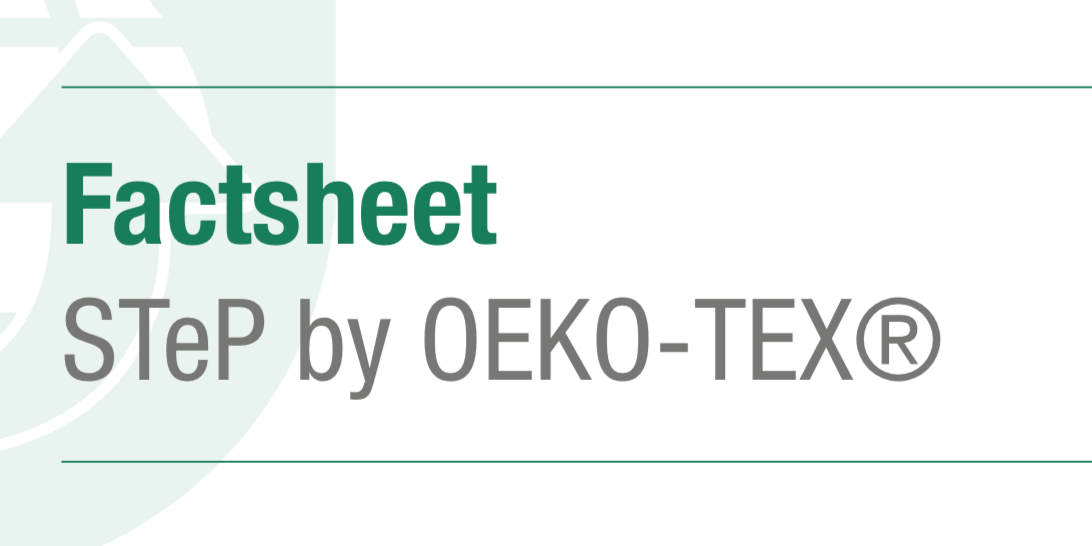
This is a document that explains the STeP Program. STeP stands for Sustainable Textile Production and is a certification system for environmentally friendly and socially responsible production facilities along the textile chain. SOURCE: OEKO-TEX
-
Special regulation of wastewater
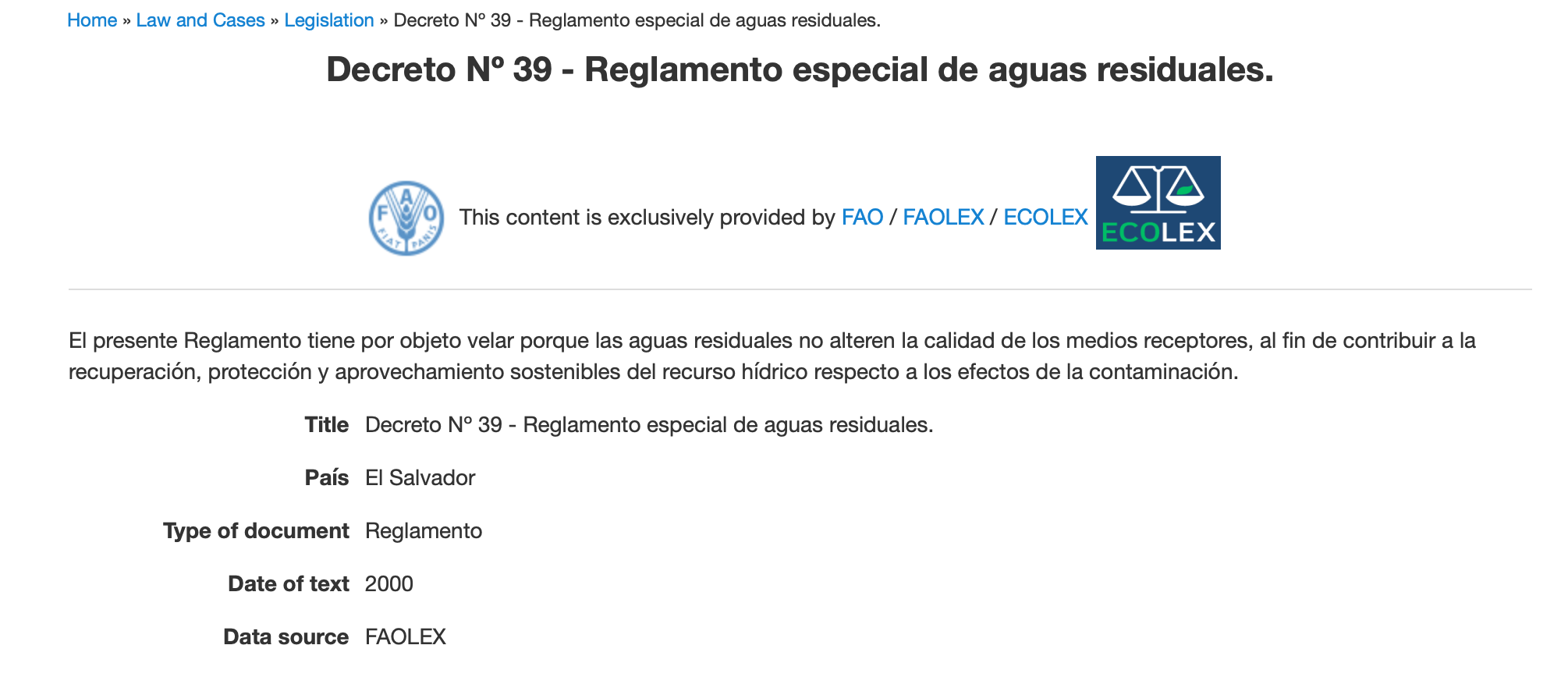
This is a document in Spanish that outlines the terms of the 2000 Salvadorian special regulation on wastewater. SOURCE: EcoLex
-
South Africa Water Services Act 1997
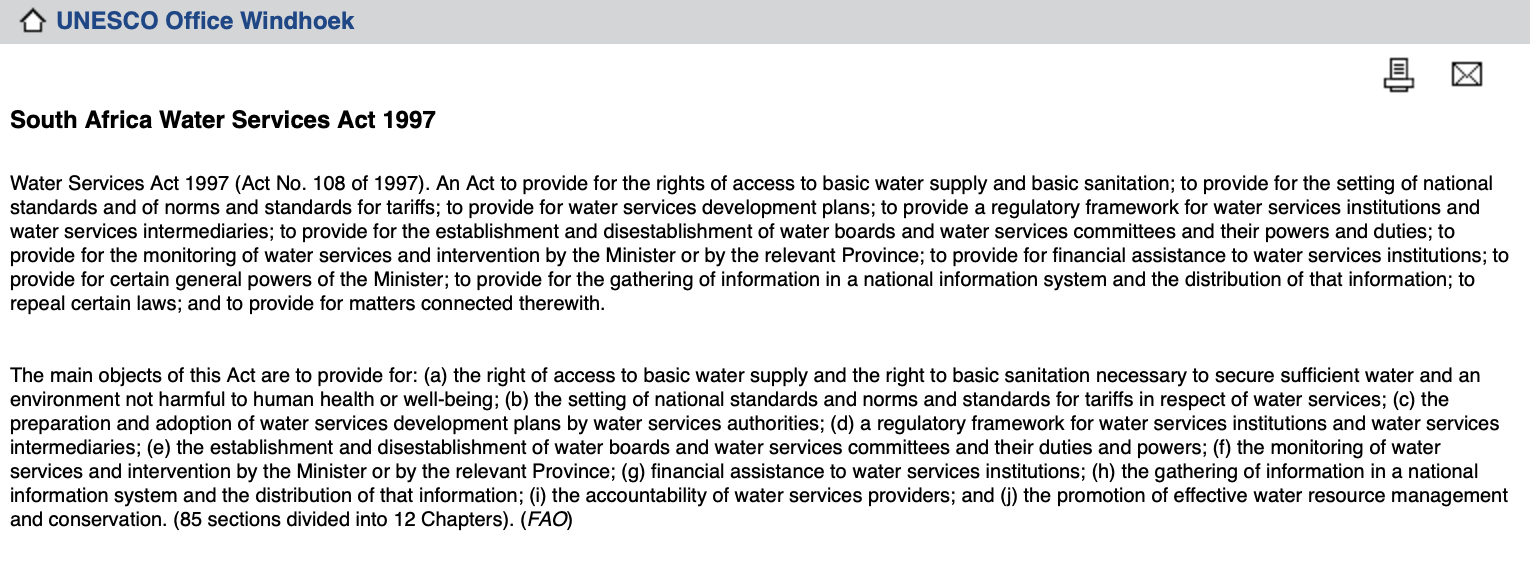
This is a document from 1997 created by the Republic of South Africa that outlines the rights of access to basic water supply and basic sanitation and sets the national standards, norms, tariffs. SOURCE: UNESCO
-
Smart Water Grid Market Size Worth USD 10.27 Billion By 2025: Hexa Research

This is a news article that discusses the growth of the global smart water grid market. SOURCE: PR. Newswire
-
Regulations on Water Quality, Control of Discharges and Protection Zones
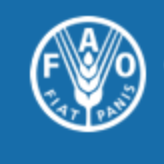
This is a document in Spanish that outlines the terms of the 1987 Salvadorian regulation on water quality. SOURCE: Food and Agricultural Organization of the United Nations
-
Regulation of the Minister of the Environment about Raw Wastewater Quality

This is an Indonesian law enacted in 2010 that regards the quality of the raw wastewater for businesses and/or oil, gas, and geothermal activities. SOURCE: Global Regulation
-
Public Health Act, B.E. 2535
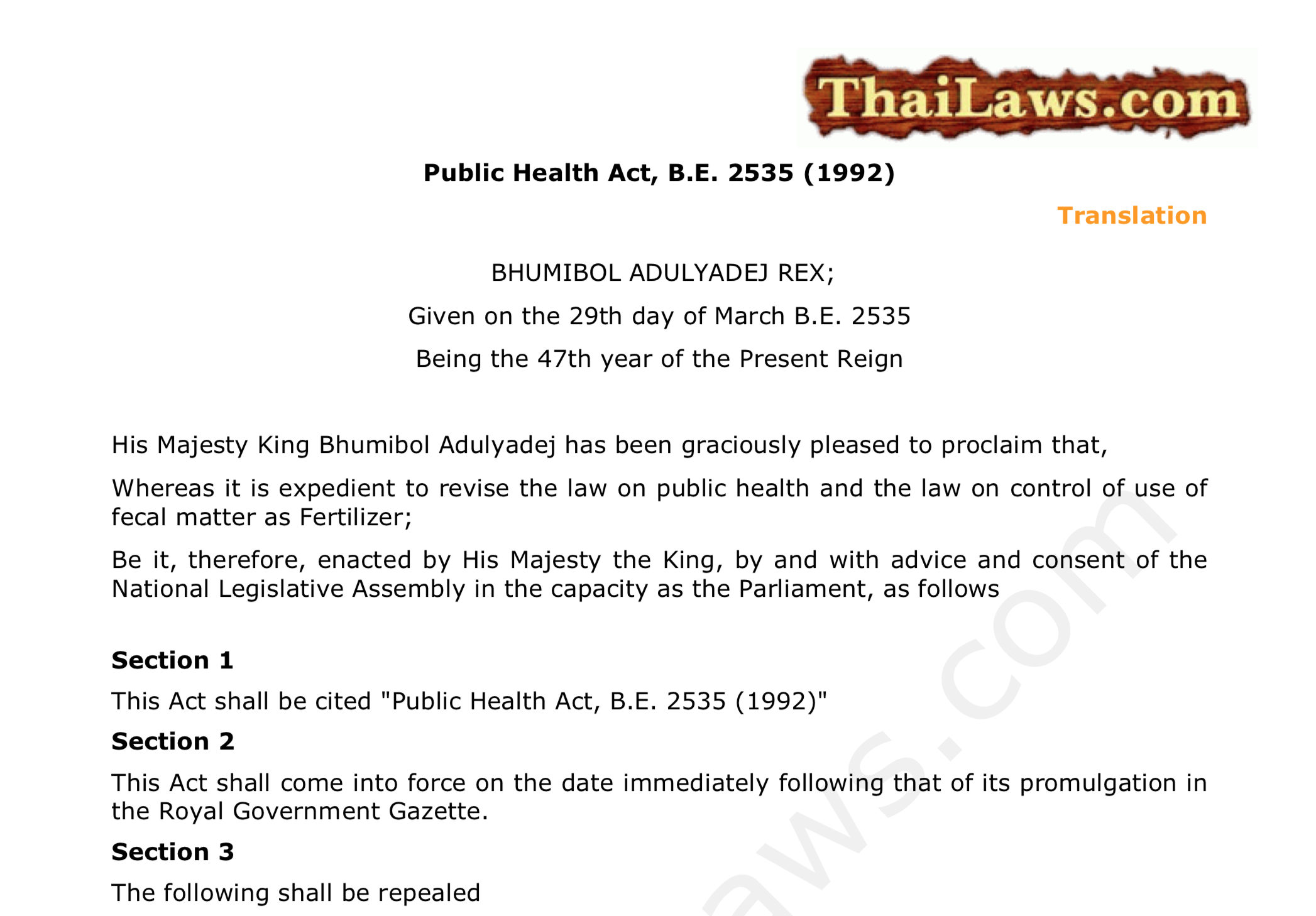
This is a Thai governmental document from 1992 that outlines the revisions to the law on public health and the law on the control of the use of fecal matter as fertilizer. SOURCE: Thai Laws